DIY Project: Let's Make a Bonsai Training Pot [Bonsai]
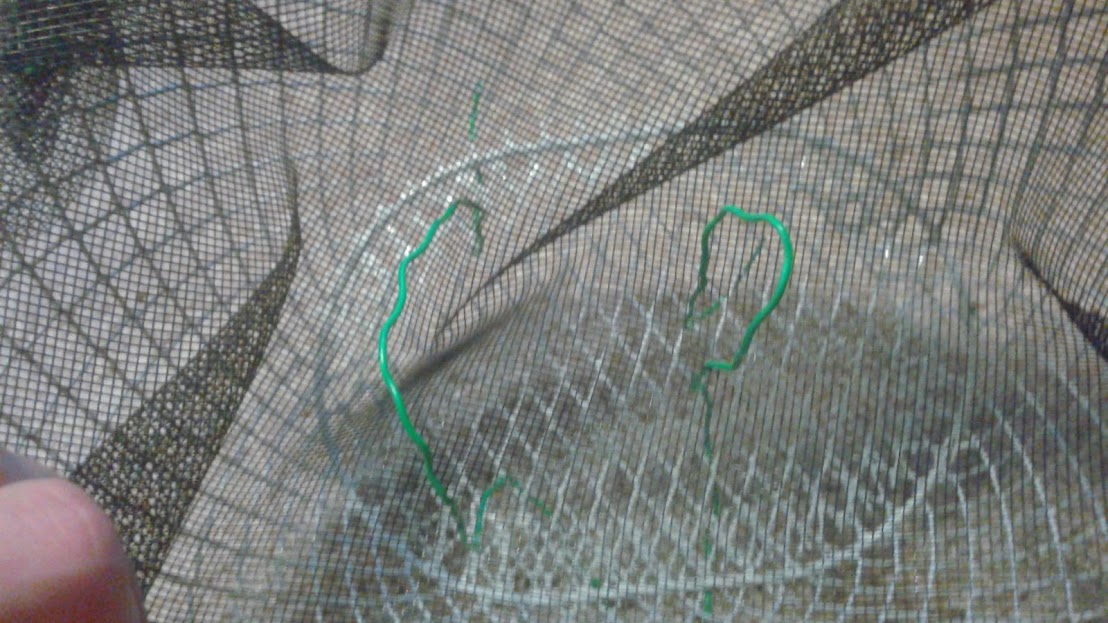
As you know, I insist on including a bit of personality into all of my posts. Please pardon the mess. In this post, I'm going to turn a simple how-to demonstration into a learning activity that can also be fun to read about.
You're welcome.
Photos in this post are all original works taken from my smartphone camera.
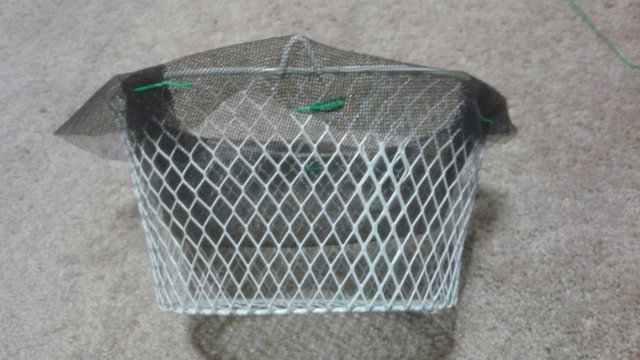
What I am going to show you first is how I created this style of pot for growing a tree in, and then I will talk about why I designed it this way after you see how it was made.
Materials
- screen material
- wire basket
- garden wire
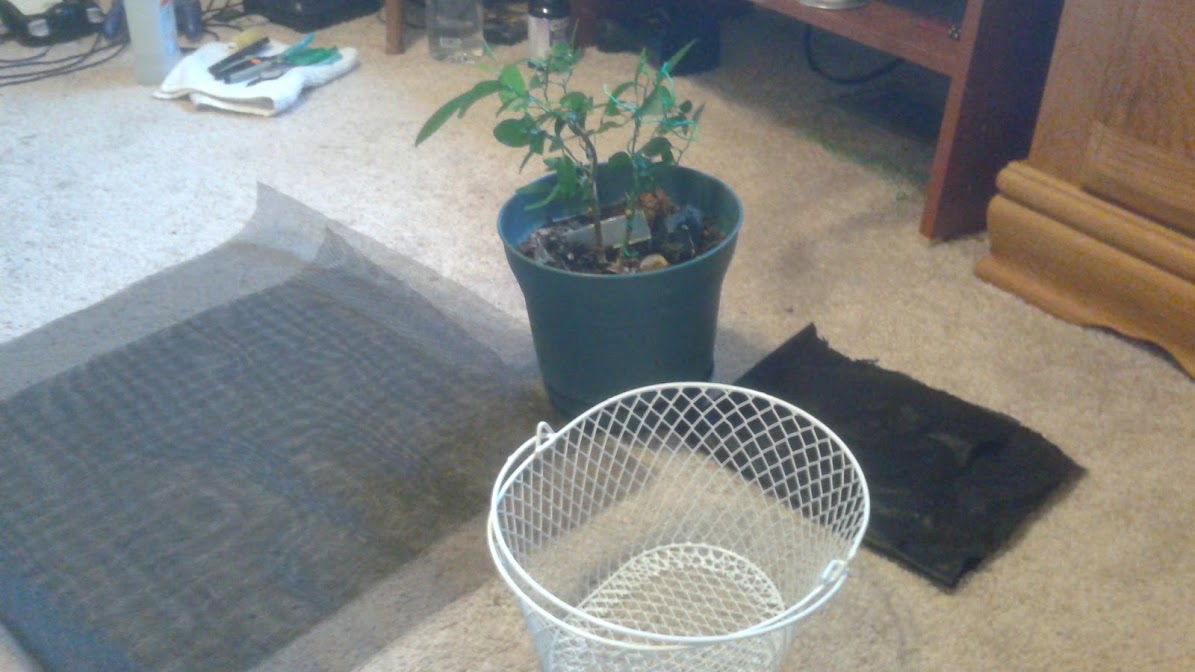
Above, you can see the Lime citrus tree I have. It will eventually be planted into a pot like this one so it can be made into a bonsai tree with a nice thick trunk, and lots of spreading roots to make it into a more productive and healthy tree.
If you don't have screen material, such as the kind used for making a window screen, you can try using a metal hardware cloth or weed barrier (the black rubber cloth shown to the right in the photo), though I do not think it will drain as well unless you use very large porous aggregates for soil. Weed barrier cloth is very flexible (it might stretch and sink from the weight of the soil) and might wear out and tear apart over the course of a year.
The window screen is a bit more strong, less flexible, and has larger holes to aid in drainage. This is the material I will be using to line the basket.
Attach the Screen
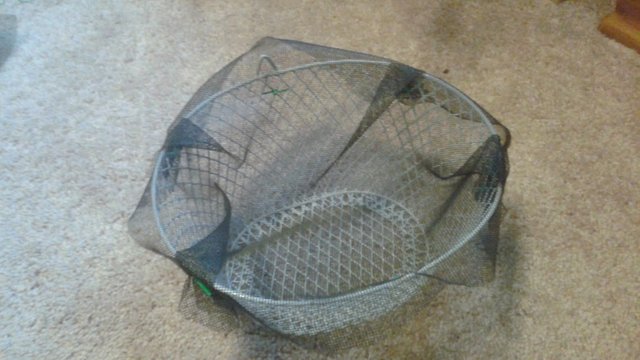
With wires small enough to fit through the screen, I folded the screen across the rounded corners, and folded the wires over to fasten it to the basket. You can also use strong thread to sew around the rim of the basket to hold the screen in place.
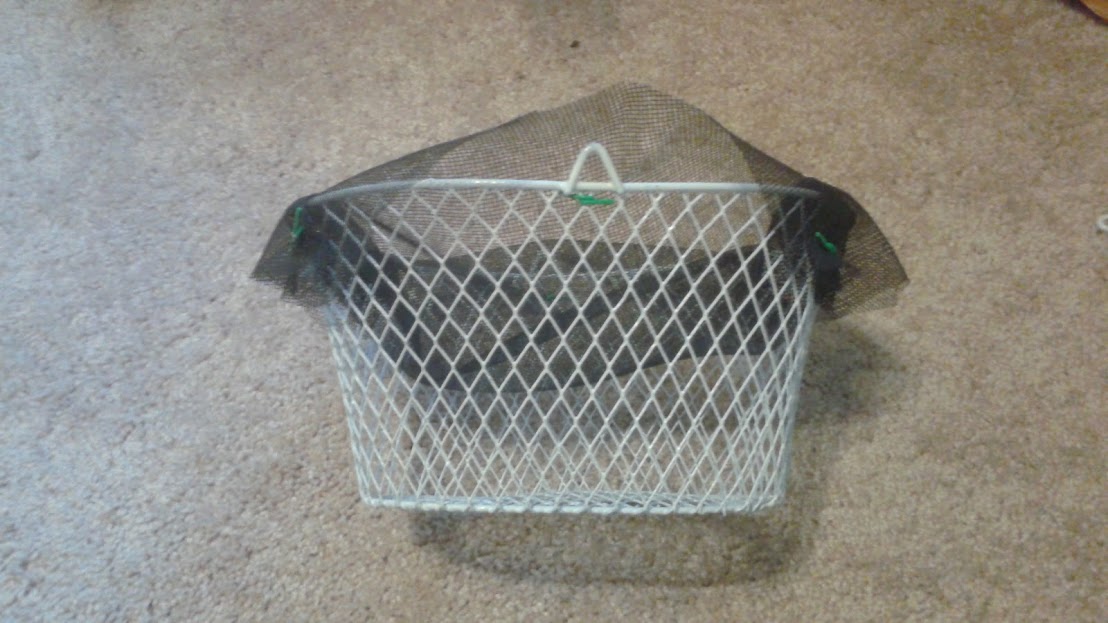
Form the screen so it stays attached in a bowl-shape, like a hammock, floating above the open air. This is going to be very important later on. Do make sure the screen is formed to be deep enough, so it can hold a good amount of soil to fully cover the roots of the young tree.
Scissors can be used to trim off any excess material hanging over the side. If you want to tuck down the edges so they don't stick up, fold it over the edge of the rim, and use the same wires to thread through it to hold it down.
Almost done.
Set the Anchor Wires
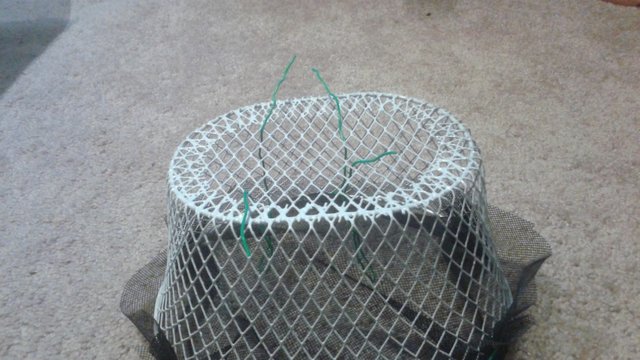
Shape a few long wires to extend through the bottom of the basket, and through the screen, to loop over where the tree roots will be. These will be tightened after the tree is positioned inside the soil mix. Leave the wires loose with plenty of slack, and bend over the sides of the base until ready to plant the tree inside.
These wires will be essential for securing the tree firmly inside the pot. The tree needs to be able to stand firm so the wind and vibrations do not jostle the tree around. Any movements that disturb the position of the tree can snap its fragile roots.
Remember, we want to keep the tree firmly attached to the screen. We don't want to stretch the wires so hard that is strangles the roots or tears the screen.
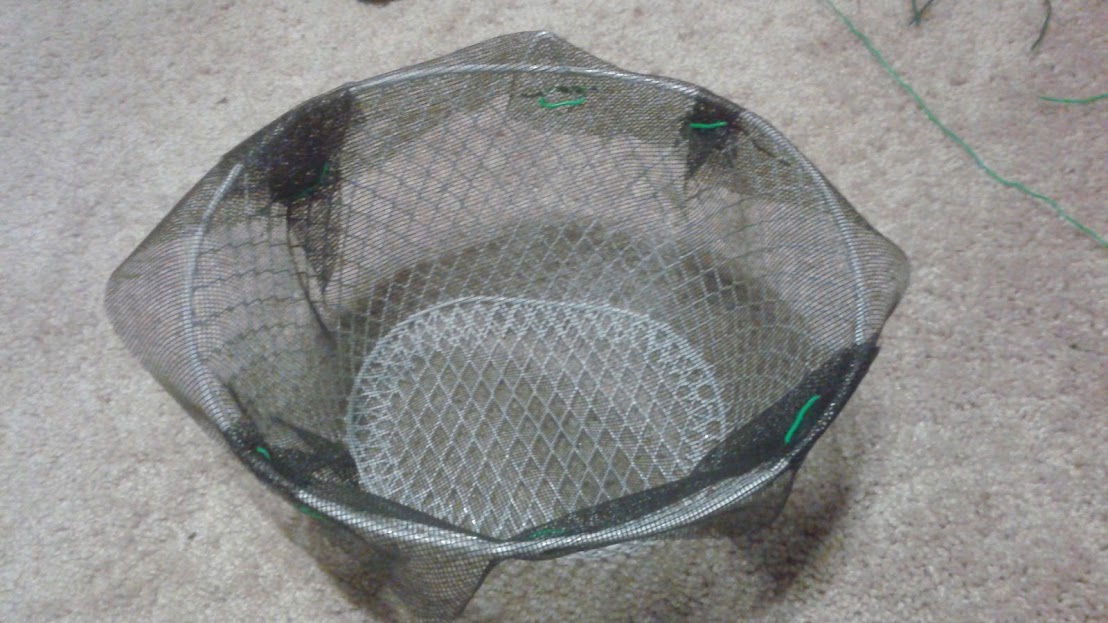
Wires for anchoring the roots, not pictured here.
That's basically it.
Finished.
Questions:
Q1: Why not use a regular pot?
Think about the way a young tree grows. It sends down a long taproot first. As long as nothing blocks it, it keeps heading downward, and it fattens up as it continues to absorb nutrients. It will send out side roots to find nearby nutrients to feed the main root. It might not send out any side roots until it needs to.
In bonsai, the goal is to grow a tree in a small shallow pot. To plant a young tree in a shallow pot, it will grow the same traproot, but it will extend around the base in a spiral because it has nowhere else to go as it expands to seek out space. We can trick the root into dividing, by using sharp and porous rocks mixed into the soil, but sometimes the taproot still grows straight through the open spaces, following the same path the air and water flows every time the soil is watered.
Using a training pot, with lots of access to fresh air on all sides, the taproot will not be prevented from extending downward. Instead it will extend beyond the screen, and its tip will wither as it is exposed to air, cold, heat, wind, dryness, and sunlight. Damage to the root-tip is not enough to kill the tree. Instead, the tree maintains the root it has, and adapts by sending out a new secondary root through the soil, until it too gives up trying to expand beyond into the hostile open air outside the training pot. As the tree keeps sending out new roots, eventually it will have many, many roots throughout the training pot. This is the ideal root design structure for a healthy bonsai tree.
Q2: Why not use a pot with more holes?
Yes, actually this is an excellent solution. You can use a colander. You can drill extra holes in a pot, and cover the holes with screen material. You can also buy special air-pruning pots. Almost all of these are suitable for training a tree to grow more roots.
I chose this method, because I wanted a pot that was not made of cheap plastic that will chip away and break. That would be a waste, and I would have to buy a new one every time it cracks. If the metal rusts on my basket, it won't matter, because the tree will still be supported by the screen. If the screen wears out and tears, I have a roll of extra screen I can use. I purchased the basket for $1 at the Dollar Tree, as recommend to me by a fellow bonsai enthusiast. I think it was a great deal.
A metal colander would cost more, and metal is not good, as it can heat up and kill a tree in the sun, and it has an electrical conductive nature that can prevent certain micro-nutrients from nourishing the tree.
An air-wicking pot would cost much more than I want to spend.
Plastic pots can crack after a few years. Again, a waste.
I think this style of pot that I constructred will be an ideal way to save money for training my small trees for bonsai.
Q3: Why not just use a bonsai pot, and leave it there for a really long time?
Actually, I am a fan of doing this. I like to play the long game instead of seeking fast results. This is a fair strategy if you are not looking for immediate results.
However, if you look at my answer to Q1, you'll see that even a bonsai pot has some faults.
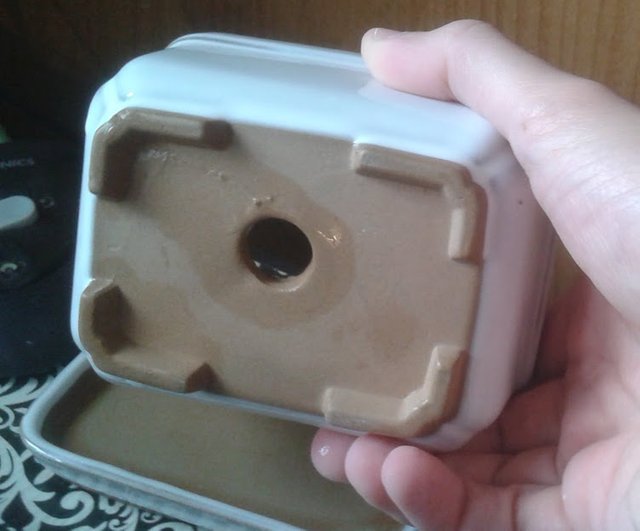
One hole. That's like one toilet for a family to share.
Without properly training the roots to divide into smaller divisions of finer, and finer roots, a tree will eventually become totally root-bound by a dominant taproot that overwhelms the space available in a pot. At this stage, the tree is ready to be transplanted, and the roots will have to be pruned. Several times I have had trees that needed nothing more than the root-bound taproot to be pruned back, and the rest of the soil in the pot barely had any roots present. The type of soil can only help the roots to divide oh-so-much before the current roots become too large for the pot. Remember, a tree thickens every year, adding a new ring of growth to its circumference. The root will do the same thing, but it will also lengthen, longer and longer, like a rope. A bonsai pot will not stop roots from lengthening, but a good soil mix can help the current roots to divide into smaller rootlets over the course of many years.
The training pot will force the tree to divide roots every time the root lengthens to the edge of the pot. This is a much faster method for expanding the number of root divisions on a tree. Access to fresh air, fresh flowing water, and proper nutrition will also supercharge the tree with vigor to expand the growth of the tree to its maximum capabilities.
Q4: Will it work?
We'll have to wait and see. In my cover photo I have the lime citrus tree I will be transplanting into one of these training pots.
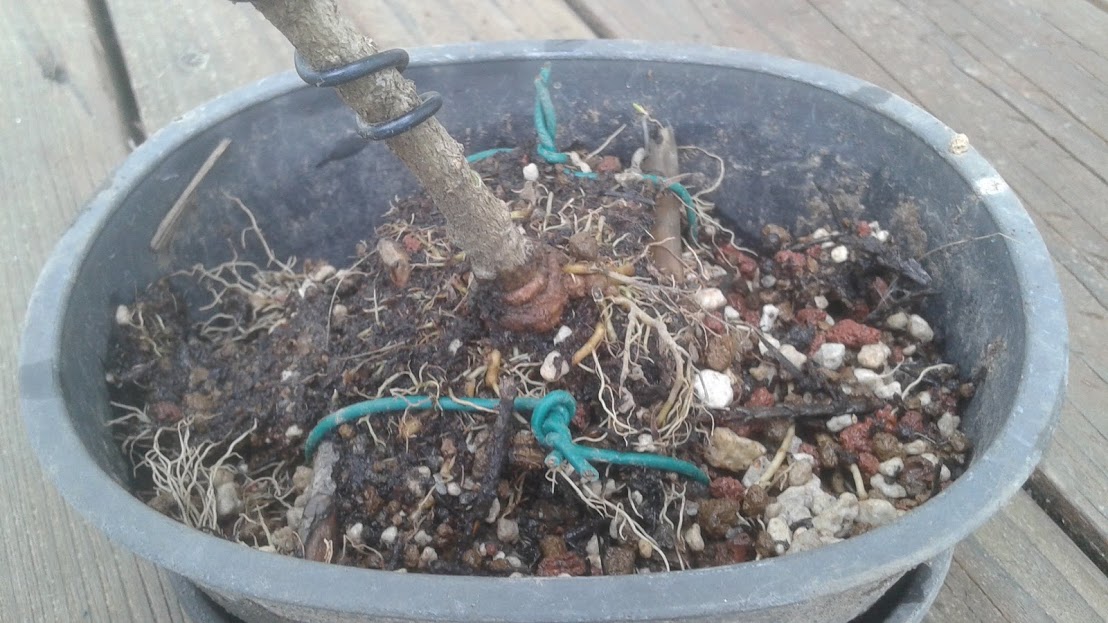
I also have this forsythia tree that was ransacked of almost all of its soil recently. Not sure if this was caused by squirrels, or from humans. I have never seen a tree kick the soil out on its own, but I have heard many silly excuses from people who do not like to admit their fault. In any event, I've refilled the pot with soil, but I am thinking this tree will be a good candidate for growing inside a training pot, as its roots look very limited, and could use a boost.
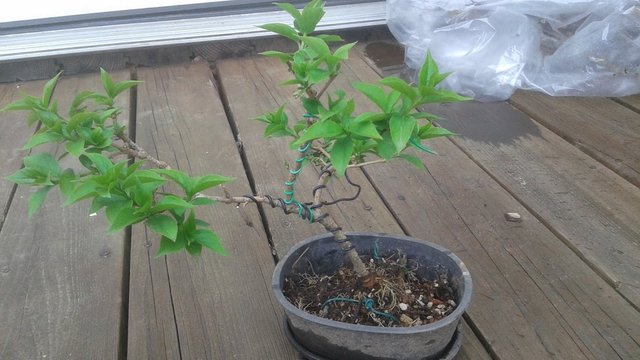
This was my fun project for the day. Any time I get to build and create something new it is an enjoyable task for me. Constructing with new materials, inventing things in unconventional ways, and putting my stamp of creation on it has always been my forte.
Does this look like something you might try, or do you have another method that you prefer? There is always more than one way to do something. My philosophy is that the best way is the best way, but is not always the right way for everyone. Modifications are an essential part of existing in the real world.
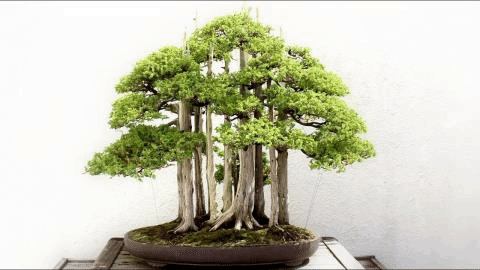
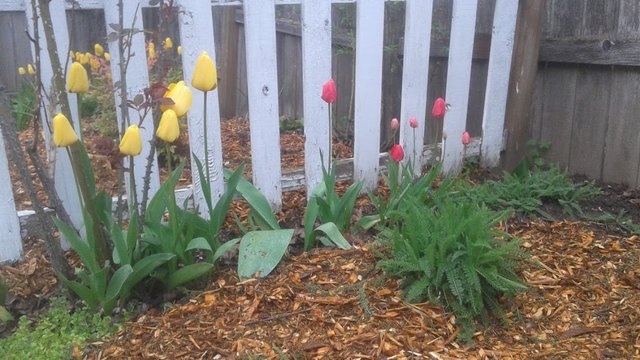

Excellent to wait for the results in the tree!
This wonderful lookin bonsai tree,i like your post.
a potent creative work of pots I honestly want to learn to make it.
wow
excellent tree and roots...
i like tree and roots..
thanks for sharing your bonsai...
Very usefull and valuable information, step by step we can follow tutorial in your article, in order to make people know about your post I have resteem to more than 1940 my followers, thanks for your attention mr @creativetruth
A good post my friend pot bonsai is very interesting, I upvote and resteem
Congratulations! Your post has been selected as a daily Steemit truffle! It is listed on rank 7 of all contributions awarded today. You can find the TOP DAILY TRUFFLE PICKS HERE.
I upvoted your contribution because to my mind your post is at least 8 SBD worth and should receive 114 votes. It's now up to the lovely Steemit community to make this come true.
I am
TrufflePig, an Artificial Intelligence Bot that helps minnows and content curators using Machine Learning. If you are curious how I select content, you can find an explanation here!Have a nice day and sincerely yours,

TrufflePigThanks @trufflepig. Are you blushing?
Wow! This post is pure gold for tree growers. I think I learned more than just one thing from all of your explanations. Especially when it comes to root development and how do you help them thrive or at least to let it have a decent rate of extra growth per year. I'll try to use your approach and try to adapt it to some of my plants as well. Definitely looking forward to try this way of training too!
If I manage to thicken any trunks for these next couple of months I will be very happy. Hope that you get the best results with these new pots. Thinking about it makes me wonder if you also took some ideas from the kokedamas theory? Cheers and have a great week! As always, thank you for inspiring us into growing better selves.
Not familiar with kokedamas. I'll should have given credit to @daniellozada for suggesting the colander method to cultivate a better tree. Then it was at my bonsai club where I started asking other members if they ever tried using a colander, and a member told me about this method that I described in my post.
Congratulations @creativetruth! You have completed some achievement on Steemit and have been rewarded with new badge(s) :
Click on any badge to view your own Board of Honor on SteemitBoard.
For more information about SteemitBoard, click here
If you no longer want to receive notifications, reply to this comment with the word
STOP